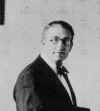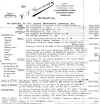| Bandleader,
Band Provider and Banjoist Born: London, March 1st, 1888 Died: Clapham, 1971 William Stanley Greening was born in Kensington on 1st
March 1888. In September
1901 he entered the Royal Academy of Music having won an Ada Lewis
Scholarship and studied ‘cello with Herbert Walenn.
He also studied piano and composition at the Academy. Between
1907 and 1912 he was first ‘cello under Jimmy Glover at the Theatre
Royal, Drury Lane also playing principal ‘cello for the Bridlington
Municipal Symphony Orchestra just before the Great War.
In 1919 he played for Adrian Boult
for a season of the Diaghilev Ballet at the Empire Theatre,
Leicester Square. It
was probably around this time that he saw potential opportunities in the
field of popular music and took up playing the banjo and by 1923
becoming a bandleader and “provider”. In the early Summer of 1924 he became a “provider” for recordings being made by the Crystalate Company for their Imperial and Mimosa labels, a position he maintained until the early 1930s, though latterly he was providing accompaniments only. Around the same time, he worked for Parlophone and is likely to have organised the sessions issued as by "The Marlborough Dance Orchestra". Much the same musicians made recordings for Winner as "Edison Bell Dance Orchestra". It has never been discovered who provided the band, but Stan Greening must be the prime candidate. At the start of 1925, Stan began working for Columbia, providing studio dance bands and accompaniments for the Columbia and Regal labels. In this capacity he replaced English music composer Albert Ketelbey, whose interest in dance music was almost non existent. Greening's recordings were issued on Regal as "Corona Dance Orchestra", the name Regal had been using to cover any dance music, whatever the source. Prior to Greening's appointment, almost all of the Corona items recorded in Britain had be made by musicians from the Savoy Hotel, usually the Savoy Havana Band. On Columbia, the general purpose pseudonym was "Hannan Dance Band", but oddly enough, with only a couple of exceptions, the Hannan sides recorded in Britain were made by members of Jack Hylton's band; Hylton even sang on one title! Other
record companies which made use of Stan's services were Brunswick and
Duophone, though it seems he had a hard time getting payment from
Duophone and had to pay the band out of his own pocket when the company
went into liquidation. He also provided bands for HMV during 1926 -
1928, prior to Carroll Gibbons' appointment. Greening’s system was simple, he gathered together a
group of musicians that were confident sight readers who would pay a
“retainer” in exchange for regular work for which they received
payment in the region of £2-£3 each per recording session.
Failure to provide an adequate deputy would result in the loss of
the retainer. Greening used a regular group of musicians over a period
of almost ten years. Some worked with him in theatre orchestras as their
regular work, others played in regular dance bands at supper-clubs and
West End hotels. The same
pool of musicians was drawn upon by two other “studio providers”
namely Nat Star at British Homophone (Homochord and Sterno Records) and
Wag Abbey (Pathe records). Harry Bidgood at Vocalion had similar ideas,
but generally used slightly different musicians. Charles "Nat" Star (1887 - 1950) was a regular member of Stan Greening’s recording team playing clarinet and alto saxophone and in return Greening would play banjo on many of Star’s recordings for British Homophone. The pool of musicians was pretty consistent, though, unlike with Nat Star (who kept detailed diaries of the musicians on many sessions he directed), there are no detailed notes for each individual session. The musicians Stan generally used were... Trumpet:
Bert Heath, Frank Biffo, Charles Mead. (1 or 2 used) Bert Heath was in Australia between 1926 and 1928 (I'm
not sure of the exact dates). In the late 1920’s Stan Greening worked out of two
offices one at 240 Clapham Rd and the second 12, Macclesfield St, just
off Shaftesbury Avenue. His
letter-head from the period is titled “The W.S.Greening Orchestras”
and boasts that they “Recorded on; Columbia, Duophone, HMV, Imperial,
Imperial Junior, Mimosa, Oliver, Parlophone, Regal and Winner”.
The letter-head is an interesting survival. It survives after
a chance meeting in the 1960s in a South London Post Office between
record collector Tom Gayton and Mr Greening himself.
Tom had just been "junking" and was clutching his latest acquisitions
which included a Regal labelled as "Corona Dance Orch". Stan
tapped him on the shoulder and said "That's one of my records you
have there". The letter has a typed “CV” that
Greening passed to Tom Gayton on a subsequent occasion along with a few
photographs of the band in the Columbia studios. These are now in the possession
of Stephen J. Paget who kindly has lent them to me for use here. Nat Star’s pocket diaries are another fascinating
survival used by Brian Rust and Sandy Forbes to put dates to many
sessions in the discography “British Dance Bands on Record”. They show that Stan Greening was very busy with Nat Star at
Homophone during 1928 and 1929. The
diaries also show that they also played evening jobs together in bands
put together by probably by Greening. There is one reference to
“Greening Frascati’s”. It seems likely that Greening played with
Star in Leonard Hornsey’s Theatre Orchestras of the late 1920s and
maybe joined Star for “gigs” with George Newman’s Band during
1930. Greening discouraged ad-libbing and was insistent on
musical discipline from his “sight readers”.
So, there are none of the “advanced” jazz solos associated
with the more sophisticated studio groups of the era, but what may be
lacking in subtlety is made
up for in enthusiasm and attack. The
main attraction of these Greening's recordings lies in the disciplined
delivery combined with the typical “period sounds” of the 20s.
Heath and Tipping occasionally take solos which tend to be rather
corny, but fun. The flowing
tenor-sax of George Smith stands out amongst the rather rigid playing of
the other musicians. He was
working for the Starita Brothers at the time and eventually settled with
Carroll Gibbons at the Savoy for the 1930s.
Smith eventually became manager of the Savoy Theatre. Towards the end of 1928 there was a marked reduction in
Greening’s work for Regal. This
coincided with the appointment of Van Phillips as Musical Director for
Columbia. Mr Phillips, when
interviewed in the late 1980s stated that he was also responsible for
the bands recording for Regal such as Hal Swain, Billy Cotton and the
Stan Greening group. Van
remembered supplying some of his own arrangements for these bands and
some of the titles from 1929 and 1930 have a “Van Phillips” sound. Greening’s recording activity began to dry up completely in the early 1930s. He continued to provide bands for gigs and may have continued as a theatre musician for his regular income. His notes mention that between 1935-39 he played banjo, guitar and occasionally string bass for “various Broadcasting Band Leaders including Jack Hylton, Debroy Somers, Percival Mackey, Sydney Kyte, Bobby Howell, etc...” It was during this period that he was “solo guitar for Sir Thomas Beecham at the Royal Opera, Covent Garden”. He also played the banjo part for Beecham in the Delius Opera “Koanga” at Covent Garden in 1935. Although
he made no more dance band recordings after 1931 (apart from an isolated
Regal issued only in Australia), he still provided accompaniments for
various popular artists for the next couple of years at least. There is
also a Jack Payne session for Imperial which Stan directed after Payne
was unable to get to the studio. As this would have to be a session
where Jack didn't sing or speak on record, it is likely to be the one of
the two June 1932 sessions. Greening worked with Debroy Somers at various London theatres during WW2 and then with Reginald Burston for the whole three-and-a-half year run of “Oklahoma” between 1947-50. He was still active in the music business during the 1950s playing various instruments for such shows as “The Lyric Revue”, “Porgy and Bess” and “The Threepenny Opera”. He lived in semi-retirement at his flat in Clapham during the 1960s and died in 1971. For Further research into the musicians on Stan Greening's recordings, click here. Acknowledgments: This
page has been compiled from notes written by Charles
Hippisley-Cox, with help from Steven
Walker. Thanks also to Bridget Palmer (of the Royal Academy
of Music) for tracking down information on Greening’s scholarship. Thanks
as well to John Wright and Roy Star for the information
about Nat Star. |
|





